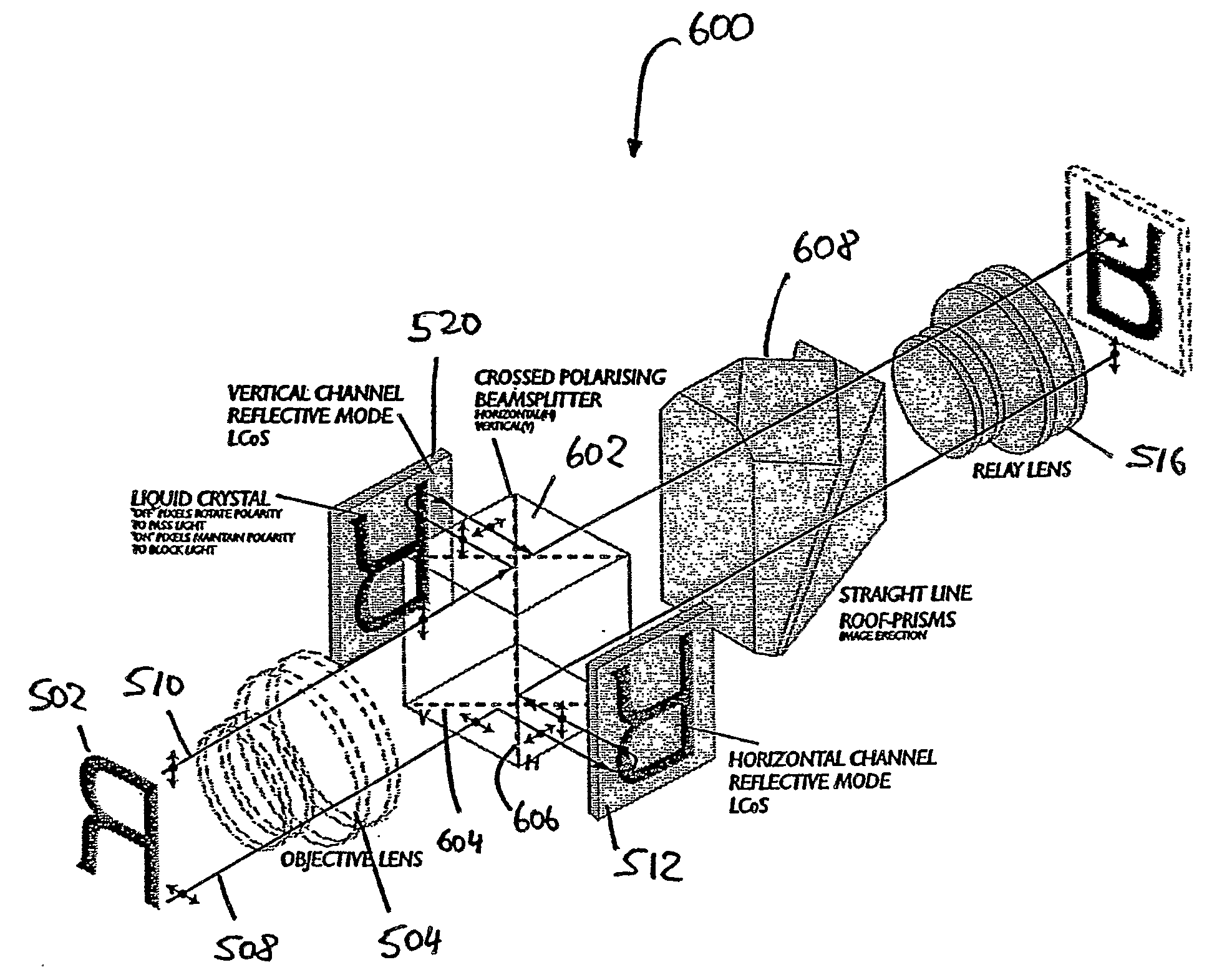Electro-Optical Filter
a filter and optical technology, applied in the field of optical filters, can solve problems such as the challenge of imagining objects with a large dynamic brightness range, and achieve the effects of reducing light intensity differences, and large dynamic brightness
- Summary
- Abstract
- Description
- Claims
- Application Information
AI Technical Summary
Benefits of technology
Problems solved by technology
Method used
Image
Examples
Embodiment Construction
[0027]Referring initially to FIGS. 1 to 3, an electro-optical filter according to an embodiment of the present invention is now described. The electro-optical filter 100 comprises a matrix of reflective elements 102. In this embodiment the electro-optical filter 100 is fabricated using Liquid Crystal on Silicon (LCoS) technology which is often used for fabricating displays for projection devices and rear projection televisions.
[0028]Each reflective element 102 is in this embodiment formed on a silicon substrate 104 on which photodiode structures 106, 107 and transparent insulating layers 108, 110 and 112 are positioned. Further, the reflective element 102 comprises a plurality of metallic layers, such as layer 114 for drive circuitry wiring, layer 116 for drive circuitry wiring and voltage field shielding, and layer 118 which forms a reflective mirror-type electrode. Layer portion 120 defines a gap between adjacent reflective elements 102 in the matrix and a via 122 electrically con...
PUM
| Property | Measurement | Unit |
|---|---|---|
| angle | aaaaa | aaaaa |
| size | aaaaa | aaaaa |
| size | aaaaa | aaaaa |
Abstract
Description
Claims
Application Information
 Login to View More
Login to View More - R&D
- Intellectual Property
- Life Sciences
- Materials
- Tech Scout
- Unparalleled Data Quality
- Higher Quality Content
- 60% Fewer Hallucinations
Browse by: Latest US Patents, China's latest patents, Technical Efficacy Thesaurus, Application Domain, Technology Topic, Popular Technical Reports.
© 2025 PatSnap. All rights reserved.Legal|Privacy policy|Modern Slavery Act Transparency Statement|Sitemap|About US| Contact US: help@patsnap.com



